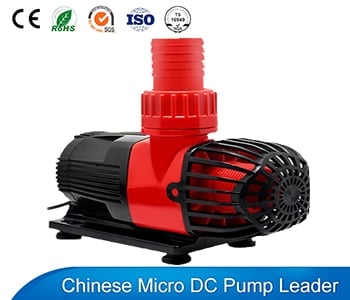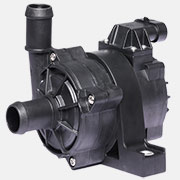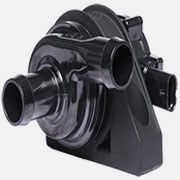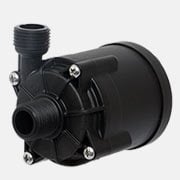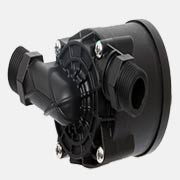Aquarium Water Pump
Home > Aquarium Water Pump
Aquarium water pump also named fish tank water pump, refers to a mini water pump used for converting stagnant water into flowing water, promoting the circulation of water in the aquarium, increasing the dissolved oxygen in the water, and filtering the dirty things in the aquarium such as fish manure etc. As a small circulation water pump, it circulates the water between the aquarium and the filtration system to ensure the basic living water quality of fish. Which helps to cultivate the nitrifying bacteria to make the water quality clear and clean.
Aquarium water pump is one of the most important component of the aquarium filtration system. And is also one of the core factors that determining the quality of aquariums.
Standard Aquarium Water Pumps by VOVYO:
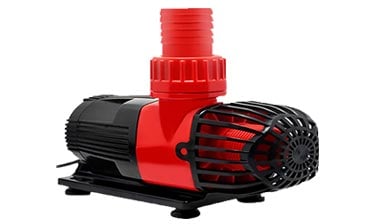
Aquarium Water Pump VP85A
Aquarium Water Pump VP85A is a high quality made dc water pump with large water flow. It’s widely used in Aquarium, fish tank. Very popular in aquarium market, etc.
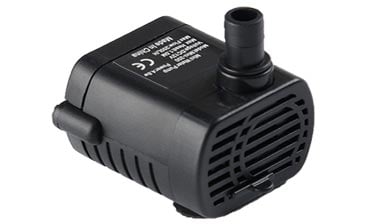
Fish tank Pump VP30
Fish tank Pump VP30 is a battery operated water pump made by ABS material. It is widely used for fish tank, tabletop fountains, hydroponic systems, arts and crafts, etc.
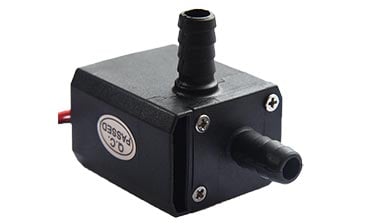
Circulation Pump VP40N
Fish tank Water Pump VP30A is a battery powered water pump that can be driven by a 6v,12V DC battery. It is widely used in fountain, fish tank, water mattress,floor heating, etc.
Want to learn more?
Table of Contents
What types of aquarium pump are there?
There are two types of pumps for aquariums: submersible aquarium pump, external aquarium pump (that is non submersible aquarium pump) . As its name implies, submersible aquarium pump is a submersible water pump used in aquarium water. External aquarium pump is a water pump installed out side of the fish tank. And people connect it to the aquarium through a water pipe for directly using.
People also divide the aquarium water pump into DC aquarium pump, AC aquarium pump by the power supply method. DC aquarium pump is more safety, more longer life span, and energy saving when compares with AC aquarium pump. However, these two types pumps if with the same power consumption. The later is more cheaper than the former in price and lower in performance. Except above power form, people can also use it as a battery powered water pump by powering the pump with battery.
Except above classification methods there are other methods to classify the pump. Such as divide the aquarium water pump into inline aquarium pump, non inline aquarium pump. According to the inlet and outlet form of the pump. And divide the pump into micro aquarium pump, large aquarium pump according to the size of the aquarium pump.
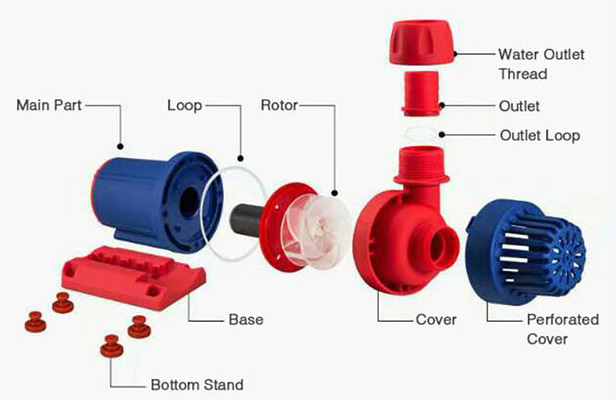
How to Choose an Aquarium Water Pump?
As we all known, the root cause of many fish diseases is that the power of fish tank pump is too small and the fish culture density is too large. Which causes the filtration system can not timely break down the harmful substances in the fish tank. Such as ammonia nitrogen and nitrite. Poor water quality is a breeding ground for bacteria and parasites, which lead to the fishes are constantly ill. Therefore, it is very important for people to choose a right fish water pump for their aquarium. So, what factors need we take into consideration when choose an aquarium water pump? Following 9 factors need to be considered:
1. The size of the aquarium water body:
The final result is the water in your entire aquarium (including the water in the filter). No matter how standard or peculiar the size of your aquarium is. We can calculate the filtered water flow required for aquarium filtration only after we obtain the water volume. The flow rate of the aquarium pump should be 3 to 5 times the total volume of the aquarium. For example, you should choose 300gph fish aquarium pumps for a 100 gallons aquarium. And 600gph aquarium pump for a 200 gallons aquarium. Similarly, protect the suction of the submersible aquarium pump. Install a large mesh isolation on the suction of the pump. So as to avoid injure the fish by the attraction of the water flow . Certainly this is not requires for a small aquarium pump that filter at the bottom.
2. The types of fish:
The types of fish are no need to detailed. Simply speaking, the more active fish are accompany by digestion and feeding problems. So it require a larger flow of aquarium pump to deal with these problems. Relatively speaking, quiet fish need a bit more lower water flow than that of activity fish. Some times, the size of fish is also one of the factors affecting the selection of pumps. The suction of water generated by the submersible aquarium pump has little effect on medium-sized and large fish. However, the main factor should considered is that: Some small fish who likes still water (body length<5CM) and newly hatched seedlings are easy to be sucked by the strong suction of the pump. Because of their poor swimming ability, will slightly injure their gills or leads them to be direct death.
3. Fish culture density:
The more fishes there are, the more they eat, the more excreta they produce. Lead to the more larger water flow need to circulate and clean the water. It mostly because of the pump power is often too small which lead to the pumping capacity is insufficient. If the feces can not be pumped successfully. Therefore, the more fishes there are or the fish overload in your aquarium. You need to choose a fish tank cleaning pump with more large water flow performance.
4. The difference between the aquarium water pump nameplate flow parameter value and the actual flow value.
Water Head of the aquarium pump
The water head of an aquarium pump refers to how high the water can be pumped to by the pump. That is to say, the height between the two horizontal planes is the water head required for your aquarium. But in fact, water flow is zero when a pump with 1.5 meters head lift water reaches 1.5 meters height. Because, its technical reference only says that it can lift water to such height, it’s like a pressure measure. So, you should choose a fish tank pump with water head 0.5 meters more higher than the height between the two horizontal planes of aquarium. So that, the water flow of the pump can be guaranteed. However, it is actually less than its ideal water flow and this is unavoidable.
Formulas for calculating actual flow
Actual Flow=(1-Actual Head/Maximum Head)*Maximum Flow
People prefer large flow pumps when choosing aquarium water pumps. Firstly, the more smaller the power of the pump with the same flow rate is, the more economical it is; Secondly, user should consider the actual flow rate of the pump if the bottom filter is used; Finally, it is not that the more larger water flow rate the water pump is, the more better.
5. Cost-effective ratio:
You need to consider get best price to purchase the highest quality water pump to achieve the best performance-price ratio. According to the needs of the aquarium, choose a aquarium water pump with suitable power, flow and head.
6. Quality of aquarium water pump:
The quality of the fish tank water pump directly determines its noise, rust prone degree, wire safety and so on. Choosing a low-quality pump will exist great hidden dangers. Therefore, when choose a water pump, we must purchase pump made by a high quality assurance manufacturer. You can’t just buy aquarium water pump with poor quality just to save money. Also, people should choose a quiet aquarium pump for the fish to improve its living environment. It will help for extending the lifespan of the fish.
7. Construction of aquarium water pump system pipeline:
No matter how powerful your aquarium pump is, complex piping can increase drag and cause flow loss. Therefore, in the construction of the pipeline, people should try to decrease the changes of the piping direction. Because, the more the turning is, the more the water flow rate loss is. And you should choose pipes with smoothly inner wall as possible as you can. Like some hoses, in order to be able to bend at will, it is made as a ring shape. However, this greatly affects the water flow rate. Moreover the pipe wall is prone to garbage after a long time using.
8. The filtration forms of aquarium water pump system:
There are many ways of filtration for aquarium water pump system. In these methods, you can determine use which filtration way based on the height between the fish tank water level and the filtered water level. The smallest height difference is the side filtration way and the back filtration way; The second small one is the upper filtration way, the biggest height difference is the below filtration way. And the barrel filtration way with ideal state is zero altitude difference. It is its structural advantage, since the barrel filtration way is sealed. Thus, there is no problem of atmospheric pressure, and only the resistance of the filter materials affects the actual water flow. So, you can choose the aquarium water pump according to the filtering method you need. The more larger the high difference between the two water levels is, then the more greater water flow loss is. You should choose a large flow aquarium water pump to compensate for these flow losses.
9. Service life of aquarium pump:
Use a brushless dc aquarium pump
All aquarium pumps have the problem of service life. People use a brushless dc pump for their aquarium is a good choice when compare with with a brushed dc pump or ac pump. since the service life of a brushless dc pump is more than ten times that of a brushed dc pump or ac pump. However, as we all know the water flow will smaller than before after using the pump for a long time. At this time, we need to consider to replace the pump. But, the service life has something to do with your daily maintenance.
Daily maintenance
You will find that there is garbage inside the water pump if you have ever opened it. Therefore, for every two or three months or half a year open the pump to clear the garbage inside. It can reduce the running resistance of the pump, save power, and increase the service life. However, the time interval of every cleaning should not be too short. It may damage the pump in less than half a year. Cause by dismantling if you clean the pump chamber every day. So, clean the pump chamber a time in every two or three months or half a year is enough. But, you also no need to think about how to increase the service life of a fish tank water pump to decades. However, maintain the pump is just to increase some service life and its use performance. And it does not mean that the pump service life is eternal.
Finally, after writing so much, how can we calculate out the water flow rate of the water pump which suitable for our fish tank?
eg: fish tank with size of 100cm * 55cm * 50cm (water level)
Calculate the water volume:length * width * water level / 1000 = water volume (L), unit in cm.
water volume: 100*55*50/1000=275L
Ideal pump water flow: 275*(5~10)=1375~2750L/h
In the water flow range of 1375 ~ 2750L / h, we can choose water flow of 1500L/h, 2000L/h or 2500L / h, etc., and then choose a pump suitable for your own fish tank according to various factors: such as filtration way, fish species and so on. Reached this stage we have the water flow rate data,then choose a aquarium water pump brand, pumps that from different brands with water flow difference within the range of plus or minus 200L/h are all can be accepted.
How to install a fish tank water pump ? 10 Steps:
There are 10 steps to install a aquarium water pump:
- Put the long sponge into the aquarium first.
- Screw the leaking parts under.
- Place the card parts close to the sponge on the card slot.
- Connect the aquarium water pump to the long pipe.
- Install the filter.
- Connect the hose part of the oxygen lance.
- Install the oxygen outlet upward to the bayonet.
- Connect the curved tube to the oxygen outlet port.
- Connect the water filter tube to the curved tube, note that there is a row of small holes facing down.
- Take the power plug out of the fish tank.
What attentions should be paid to when using the fish tank pump?
- Immediately disconnect the power supply if the power wire is damaged.
- Clean the pump rotor and the pump impeller regularly.
- It is necessary to check whether the rated voltage of the pump is consistent with the actual voltage before using it.
- It must first unplug the power supply and cut off the power supply to ensure safety when installing or removing and cleaning the water pump.
- Clean the filter cotton frequently to ensure normal water ingress and good filtration effect.
- To protect the aquarium water pump body, if it breaks, stop using it immediately.
What reasons cause the big noise of aquarium water pump? and its solution!
All fish lovers want their beloved fish to have a quiet and clean aquarium environment, however, there will inevitably be some noise, affected by the external aquarium equipment. The most common is the work noise of the aquarium water pump. People feel irritable when listen the noise too much, let alone the fish.
If the work noise of your pump is getting louder during use, you can try to solve it with these methods:
1. Internal problem of the pump
Hold the aquarium water pump in your hand and suspend it in the aquarium water and start it. You can open the pump to clean its pump chamber, if its work noise is still loud. Or clean the entire pump once, then re-installation the rotor, impeller after removing dirt. You will find that the work noise decrease a lot after start the pump again.
2. The resonance noise generated by the pump or pipe contacting the aquarium cylinder wall
Move the pump or the pipe away,so that it is not in direct contact with the aquarium cylinder wall, then the resonance noise disappears.
3. Noise caused by the poor quality of the pump motor
The noise becomes larger after the rotor wears, and you can reduce the noise by replacing the rotor.
4. Big noise caused by too much power of the fish tank water pump motor
Adjust the power to the applicable position if the pump power is adjustable, or simply replace the pump with a small power pump.
5. Noise generated by pump vibration
Pad a piece of cotton or filter cotton under the pump or put it into the base cabinet, and check the whole aquarium cylinder is stable or not. Noise can be reduced by padding the place where it is suspended.
6. Soundproof and sound-absorbing treatment.
Apply soundproof and sound-absorbing treatment to the aquarium wall and plate which around the aquarium water pump. It is also possible to install an noise enclosure to the water pump to block the noise of the pump from propagating in the air, and people also can reduce the noise of the pump by using anti-vibration device for the pump.
7. Take measures upon the aquarium to reduce noise
Keep the aquarium 10 cm from the wall, and Install a sponge pad on the place where close to the wall or at the bottom of the fish tank. The filtration way of the fish tank should use overflow filtration as much as possible. The outlet of the filtration system should be inserted into the aquarium water so as to avoid the noise caused by it fall in the water. Moreover, kept the water flow velocity stably during the filtration process. So as to avoid the generation of air bubbles, and generate noise when air bubbles discharges from the water.
8. Use muffler balls
Use muffler balls to fill full the water pipe triangle area under the fish tank, that is a hollow plastic ball smaller than the table tennis with a sponge or foam inside; Or directly increase the length of the filter water pipe to make the pipe directly enter into the water so as to decrease the noise, and adding an anti-gas lift at the launching water can promote the cultivation of nitrifying bacteria, and it also has a quiet effect,and also the fish is not easy to be scared.
9. Use a quiet aquarium pump
With the innovative development of modern technology, the aquarium water pump from the previous single AC marine aquarium pump to now the dc aquarium pump. DC pumps with more energy efficient and more lower noise. However, not all DC pumps are quiet water pump. Therefore, the selection of 12V aquarium pump is one of the most important factor. The mainstream of modern new fish tank water pump is DC energy saving, in which the sine wave frequency conversion water pump is more silent.
How to maintain a aquarium water pump?
The aquarium water pump is the heart of a fish tank (aquarium). In order to make this “heart” work properly, we must learn to how to maintain it. Otherwise, it will lead the “heart” to stop working due to careless maintenance , that will be a disaster of the fish tank (aquarium).
1. First of all, disassemble and clean the aquarium water pump regularly.
There are many pollutants in the aquarium, such as fish manure, decaying water plants, and residual feed that all may be sucked into the water pump. A small portion will remain in the pump due to the direction of internal rotation of the pump and the nature of the impurities. Moreover,the place between the turbine chamber and the rotor is most easiest to stored impurities. These dirty things will reduce the water flow of the pump, increase its working temperature as well as its noise.
Therefore, suggest people to clean the pump once a month. Open the protective cover of the pump, remove the turbine, rotor and shaft, thoroughly clean the inside of the pump, and clean the surface or dead corner with a used toothbrush. Be sure to pay attention to the internal small parts when cleaning, do not lose them.
2. Secondly, do not install the fish tank pump where it is too close to the sand.
Some people like to install the aquarium water pump in the position where close to the bottom of the aquarium,in their opinion by doing so the pollution will be pumped thoroughly. In fact, this is meaningless, because the pollution will be pump to the filtration system along with the water flow as long as the pump makes the water circulating.
Install the water pump in a too low position, will may lead the sand under the bottom of the fish tank water pump to be sucked into the pump , then the sand rotates along with the pump rotor will seriously affect the life span of the pump .
Also, do not make the outlet of the pump toward the obstacles which are too close, do not deliberately completely or half block the outlet of the pump, which will seriously shorten the service life of the aquarium water pump.
3. Thirdly, pay attention to the wires of the aquarium water pump.
Pump wires is also very important, since we submerge it in water or even in salt water for half of its life time. Soaking for a long time will make the wire stiff or even broken. User should use new wires to replace the old wires of the pump after it service for 5-7 years.
4. Finally, The maintenance of the aquarium water pump motor need performing once a year.
The pump inspection appearance should be neat, the controller is intact, and the grounding wire is well connected. The three-phase wires and connecting pieces in the junction box should be tight and tight. Maintenance of related valves, pipes and accessories. The switches of each valve should be flexible and reliable, with no leakage inside or outside. The check valve should be flexible and there is no water leakage inside and outside the valve.
In a word, if people want to use the aquarium water pump for a long time and always well use it, it needs everyone to take care of the it, otherwise even a expensive pump won’t be with a long time service life span.
PRODUCT CATEGORY
FEATURED PRODUCTS
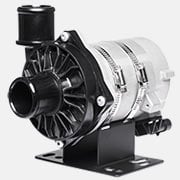
| Rated Voltage | 24V |
| Max Head | 24Meters, 25Meters |
| Max Flow | 100L/Min, 110L/Min |
| Inlet Diameter | Φ38mm |
| Outlet Diameter | Φ38mm |
| Dimensions | 183x103x240mm |
| Noise | ~60dB |
| Liquid Temperature | -40~125 Celsius |
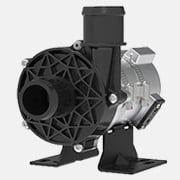
| Rated Voltage | 24V |
| Max Head | 45 Meters |
| Max Flow | 100L/Min |
| Inlet Diameter | Φ38mm |
| Outlet Diameter | Φ38mm |
| Dimensions | 175x100x170mm |
| Noise | ~60dB |
| Liquid Temperature | -40~125 Celsius |
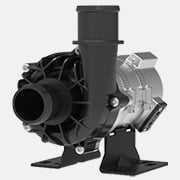
| Rated Voltage | 24V |
| Max Head | 18M |
| Max Flow | 280L/Min |
| Inlet Diameter | Φ38mm |
| Outlet Diameter | Φ38mm |
| Dimensions | 188.1x100x176.9mm |
| Noise | ~60dB |
| Liquid Temperature | -40~125 Celsius |
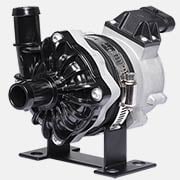
| Rated Voltage | 13.5V, 24V |
| Max Head | 14M |
| Max Flow | 55L/Min |
| Inlet Diameter | Φ20mm |
| Outlet Diameter | Φ20mm |
| Dimensions | 131x112x80mm |
| Noise | ~48dB |
| Liquid Temperature | -40~125 Celsius |
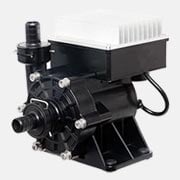
| Rated Voltage | 220V |
| Max Head | 38M, 48M |
| Max Flow | 100L/Min,100L/Min |
| Inlet Diameter | Φ20mm |
| Outlet Diameter | Φ20mm |
| Dimensions | 223.4×126.0x178.0mm |
| Noise | ~50dB |
| Liquid Temperature | -30~70 Celsius |
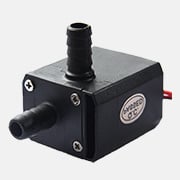
| Rated Voltage | 6V, 12V |
| Max Head | 1.5 Meters, 3 Meters |
| Max Flow | 2.5L/Min, 4L/Min |
| Inlet Diameter | Φ8mm |
| Outlet Diameter | Φ8mm |
| Dimensions | 53.5x40x34mm |
| Noise | ~30dB |
| Liquid Temperature | -25~50 Celsius |
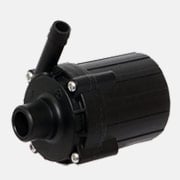
| Rated Voltage | 12V, 24V, 24V |
| Max Head | 8Meters, 13 Meters, 15 Meters |
| Max Flow | 10L/Min, 12L/Min, 13L/Min |
| Inlet Diameter | Φ18mm |
| Outlet Diameter | Φ9.8mm |
| Dimensions | 82.45×48.0x67.6mm |
| Noise | ~40dB |
| Liquid Temperature | -25~80 Celsius |
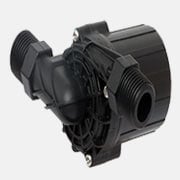
| Rated Voltage | 12V, 24V |
| Max Head | 3M, 8M |
| Max Flow | 8L/Min, 13L/Min |
| Inlet Diameter | Φ20mm |
| Outlet Diameter | Φ20mm |
| Dimensions | 82.3x102x46.4mm |
| Noise | ~40dB |
| Liquid Temperature | -40~110 Celsius |
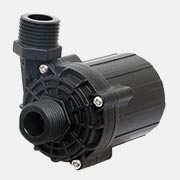
| Rated Voltage | 12V, 24V, 24V |
| Max Head | 8Meters, 13 Meters, 15 Meters |
| Max Flow | 10L/Min, 12L/Min, 13L/Min |
| Inlet Diameter | Φ20mm (1/2 inch thread) |
| Outlet Diameter | Φ20mm (1/2 inch thread) |
| Dimensions | 83.4x48x69.7mm |
| Noise | ~40dB |
| Liquid Temperature | -25~80 Celsius |
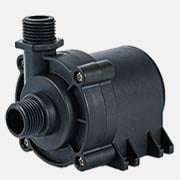
| Rated Voltage | 12V, 24V |
| Max Head | 8M, 15M |
| Max Flow | 20L/Min, 25L/Min |
| Inlet Diameter | Φ20mm (1/2 inch thread) |
| Outlet Diameter | Φ20mm (1/2 inch thread) |
| Dimensions | 96.9x73x84.3mm |
| Noise | ~40dB |
| Liquid Temperature | -20~100 Celsius |
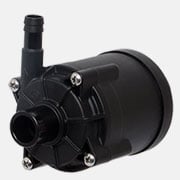
| Rated Voltage | 12V, 24V,24V,24V |
| Max Head | 11M, 20M, 25M, 32M |
| Max Flow | 20L/Min, 24L/Min, 25L/Min, 26L/Min |
| Inlet Diameter | Φ20.3mm |
| Outlet Diameter | Φ11.3mm |
| Dimensions | 90.9x60x85.85mm |
| Noise | ~40dB |
| Liquid Temperature | -25~80 Celsius |
FEATURES CATEGORY
SUPPORT & BLOG
Get Product Catalog
16.5Mb PDF File, Covers 200+ Models Products.
